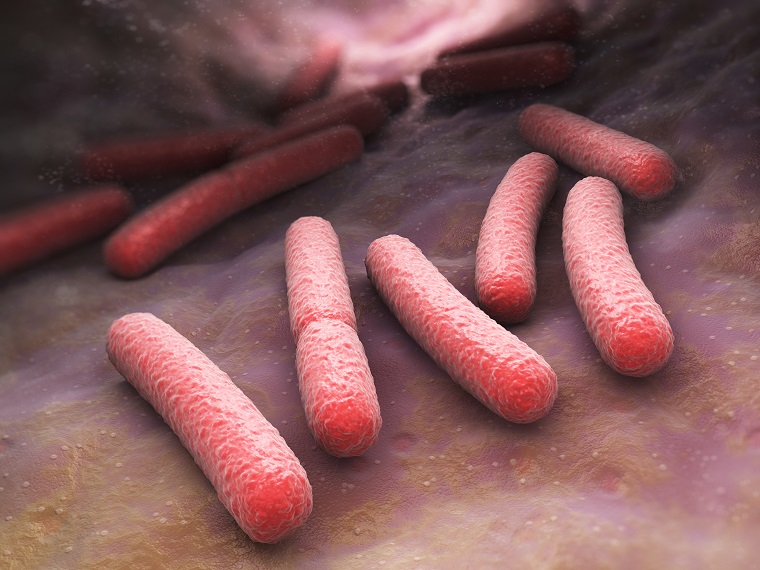Understanding How Cellular Components Function as a Team
July 5, 2018
By Adrian Taylor

Maintaining the viability of cells requires a large number of components to function as a team, and researchers in the Department of Molecular and Cellular Biology are zeroing in on how some of these components work together.
Prof. Janet Wood and her research group study the production of phospholipids, which are fat containing molecules that are critical for cell survival. Phospholipids play important roles in a several physiological processes and are therefore of great interest to cell biologists. One of these key roles is to form a membrane around the cell which serves as a critical boundary between the cell’s interior and the outside world. Using the rod-shaped bacterium Escherichia coli as a model, Wood is particularly interested in how phospholipid production is regulated within the cell.
“With our work, we are trying to understand how the structures within cells, such as proteins and phospholipids, function as a unit to facilitate complex metabolic processes,” says Wood.
Wood is particularly interested in the phospholipid cardiolipin (CL), which has a hand in many cellular processes, from facilitating energy production to helping cells survive in high salt environments. Interestingly, CL is not evenly distributed throughout the cell but is instead concentrated at the poles, or ends, of each E. coli cell. Wood and her team wanted to determine the mechanisms that cause CL to accumulate in these particular regions of the cell.
They discovered that a protein called cardiolipin synthase (ClsA), which is responsible for CL production, also concentrates at the cell poles. To elucidate its role more definitively, they created mutations within the DNA sequence that codes for ClsA and observed that the mutations caused a significant decrease in CL production. This suggests that CL is concentrated at the cell poles due to the presence of ClsA.
Wood’s research is providing important insight about how structures within cells such as phospholipids and proteins work together.
“Understanding how proteins and membrane lipids work together can provide us with critical knowledge about intricate metabolic systems,” notes Wood. “For instance, this depth of knowledge is important for determining the viability of fish, plants and bacteria in potentially toxic environments characterized by high salt content.”
Limei Chang and Raymond J. Turner at the University of Calgary and undergraduate researchers Chelsea Coumoundouros and Jennifer Garner at the University of Guelph contributed to this work. Funding was provided by the Natural Sciences and Engineering Research Council and the Canadian Institutes of Health Research.
Read the full article in the journal Molecular Microbiology.
Read about other CBS Research Highlights.